Submitted:
25 September 2024
Posted:
26 September 2024
You are already at the latest version
Abstract
Keywords:
1. Introduction
1.2. Our Contributions
2. System Model and Signal Processing Methods
2.1. Integrated Navigation Model
2.2. Observation Model for Real Signals
3. Proposed Methods
3.1. Method for Determining the AFM Carrier-Phase Ambiguity at Dual Frequencies
3.2. Method for Determining Spoofed Signals
3.3. Multi-Epoch Method for Determining the 2D Directions of Spoofing Signal Source
4. Test Validation
4.1. Setup of Experimental Scenarios
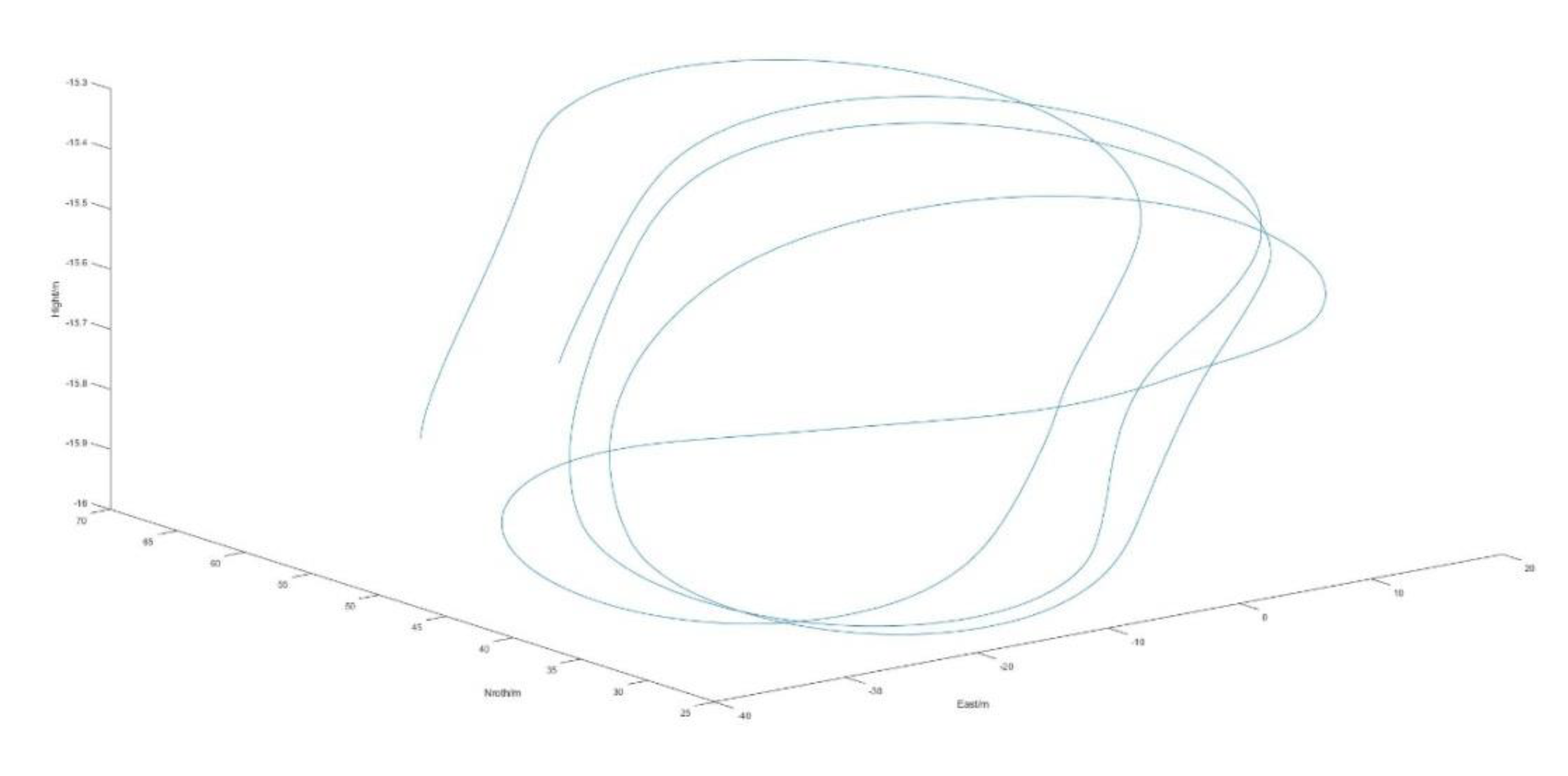
4.2. Test for BeiDou Satellites in Synchronous Orbits
4.3. Test for a Short-Distance Spoofing Signal Source
5. Conclusions
Author Contributions
Funding
Acknowledgments
References
- Lianxiao, M.; Lin, Y.; Wu, Y.; Long, Z. A survey of GNSS spoofing and anti-spoofing technology. Remote Sensing 2022, 14, 4826. [Google Scholar]
- Feng, H.; Wengen, G.; Yunfei, L.; XinXin, G.; Pengfei, H. Joint detection and state estimation based on GPS spoofing attack in smart grids. International Journal of Electrical Power & Energy Systems 2024, 161, 110151. [Google Scholar]
- Salman, L.; Muhammad, F.; Jawwad, N.C.; Faran, A.B.; Nor, M.M.; Ijaz, H.N. A framework for preventing unauthorized drone intrusions through radar detection and GPS spoofing. Ain Shams Engineering Journal 2024, 15, 102707. [Google Scholar]
- Omid, S.-T.; Mohamad, F.S.; Danaee, M.R. Null broadened-deepened array antenna beamforming for GNSS jamming mitigation in moving platforms. ICT Express 2022, 8, 161–165. [Google Scholar]
- Ming, X.; Wei, X.; Shengjie, W.; Huiyong, L.; Pengcheng, L. A Robust GNSS Interference Suppression Method Based on Null Broadening of Dual-polarized Antenna Arrays. In the Proceedings of the 14th IEEE International Conference on Signal Processing (ICSP), 2018.
- Salman, L.; Muhammad, F.; Jawwad, N.C.; Faran, A.B.; Nor, M.M.; Ijaz, H.N. A framework for preventing unauthorized drone intrusions through radar detection and GPS spoofing. Ain Shams Engineering Journal 2024, 15, 102707. [Google Scholar]
- Zhijun, W.; Cheng, L.; Yun, Z.; Rusen, L.; Meng, Y. Anti-spoofing: integrated information authentication of BeiDou-II civil navigation message. China Communications 2024, 1–20. [Google Scholar] [CrossRef]
- Wu, Z.; Zhang, Y.; Yang, Y.; Wang, P.; Yue, M. BDSec: security authentication protocol for BeiDou-II civil navigation message. China Communications 2024, 21, 206–218. [Google Scholar] [CrossRef]
- Liao, M.; Lyu, X.; Meng, Z.; You, Z. GNSS spoofing detection for single antenna receivers via CNR variation monitoring. Journal of Systems Engineering and Electronics 2024, 1–11. [Google Scholar]
- Liu, Y.; Li. S.H.; Xiao, X.; Fu, Q.W. INS-aided GNSS spoofing detection based on two antenna raw measurements. Gyroscopy and Navigation 2016, 7, 178–188. [Google Scholar] [CrossRef]
- Xiangyong, S.; Fuping, S.; Daming, W.; Kai, X.; Sai, D.; Xiuwei, L.; Ji, S. GNSS spoofing detection based on multicorrelator distortion monitoring. GPS Solutions 2023, 27. [Google Scholar]
- Lee, J.; Kwon, K.; An, D.; Shim, D.-S. GPS spoofing detection using accelerometers and performance analysis with probability of detection. International Journal of Control, Automation and Systems 2015, 13, 951–959. [Google Scholar] [CrossRef]
- Junzhi, L.; Wanqing, L.; Qixiang, F.; Beidian, L. Research Progress of GNSS Spoofing and Spoofing Detection Technology. Xi'an, China: Institute of Electrical and Electronics Engineers Inc. 2019.
- Li, J.; Zhu, X.; Ouyang, M.; Li, W.; Chen, Z.; Fu, Q. GNSS spoofing jamming detection based on generative adversarial network. IEEE Sensors Journal 2021, 21, 22823–22832. [Google Scholar] [CrossRef]
- Jiaqi, W.; Xiaomei, T.; Pengcheng, M.; Jian, W.; Chunjiang, M.; Guangfu, S. GNSS spoofing detection using Q channel energy. Remote Sensing 2023, 15, 5337. [Google Scholar]
- Tohidi, S.; Mosavi, M.R. GNSS spoofing detection using a fuzzy classifier based on time-frequency analysis of the autocorrelation function. GPS Solutions 2024, 28. [Google Scholar] [CrossRef]
- Chen, J.; Xu, Y.; Yuan, H.; Yuan, Y. A new GNSS spoofing detection method using two antennas. IEEE Access 2020, 8, 110738–110747. [Google Scholar] [CrossRef]
- Slawomir, C.; Pawel, W.; Zofia, R. Modified ambiguity function approach for GPS carrier phase positioning. Journal of Geodesy, 2010, 84, 267–275. [Google Scholar]
- Jia, C.; Zhao, L.; Li, L.; Gao, Y.; Gao, Y.T. Pivot single-difference ambiguity resolution for multi-GNSS positioning with non-overlapping frequencies. GPS Solutions, 2019; 23, ARTN 97. [Google Scholar]
- Xiao, L.; Si, C.Z.; Ye, X.; Zhang, B.; Qin, G.; Bai, Y. A TCAR method for common clock source single difference carrier phase observation ambiguity fixing. Journal of Physics: Conference Series 2022, 2253, 012008. [Google Scholar] [CrossRef]
- Forssell, B.; Martin-Neira, M.; Harris, R.A. Carrier phase ambiguity resolution in GNSS-2. In he Proceedings of the 1997 10th International Technical Proceedings of the 1997 10th International Technical Meeting of the Satellite Division of the Institute of Navigation, ION GPS-97. Part 2 (of 2), 1997.
- Enge, P.; Jung, J.; Pervan, B. High integrity carrier phase navigation for future LAAS using multiple civilian GPS signals. In the Proceedings of the 1999 American Control Conference (Cat. No. 99CH36251), 1999.
- Yiwei, W.; Yanhong, K.; Zhigang, H.; Yun, Z. GNSS spoofing maximum-likelihood estimation switching between MEDLL and CADLL. GPS Solutions 2023, 27. [Google Scholar]
- Jingxiaotao, F.; Jiang, Y.; Bing, X.; Li-Ta, H. A post-correlation graphical way for continuous GNSS spoofing detection. Measurement 2023, 216, 112974. [Google Scholar]
- Chen, S.; Ni, S.; Cheng, L.; Lei, T.; Song, X. GNSS spoofing detection method based on the intersection angle between two directions of arrival (IA-DOA) for single-antenna receivers. GPS Solutions 2024, 28. [Google Scholar] [CrossRef]
- Qian, W.; Yuwei, Y. Vehicle mounted single-antenna GNSS spoofing detection method based on motion trajectory. GPS Solutions 2024, 28. [Google Scholar]
- Rui, L.; Zhiwei, Y.; Qidong, C.; Guisheng, L.; Qinglin, Z. Localization of GNSS spoofing interference source based on a moving array antenna. Remote Sensing 2023, 15, 5497. [Google Scholar]
- Xiaoyan, W.; Jingjing, Y.; Ming, H.; Zixiao, P. GNSS interference and spoofing dataset. Data in Brief 2024, 54, 110302. [Google Scholar]
- Parisa, B.-D.; Haoqing, L.; Peng, W.; Pau, C. Detecting GNSS spoofing using deep learning. EURASIP Journal on Advances in Signal Processing 2024, 2024, 1–19. [Google Scholar]
- Counselman, C.C.; Gourevitch, S.A. Miniature interferometer terminals for Earth surveying: ambiguity and multipath with global positioning system. IEEE Transactions on Geoscience and Remote Sensing 1981, GE-19, 244–252.
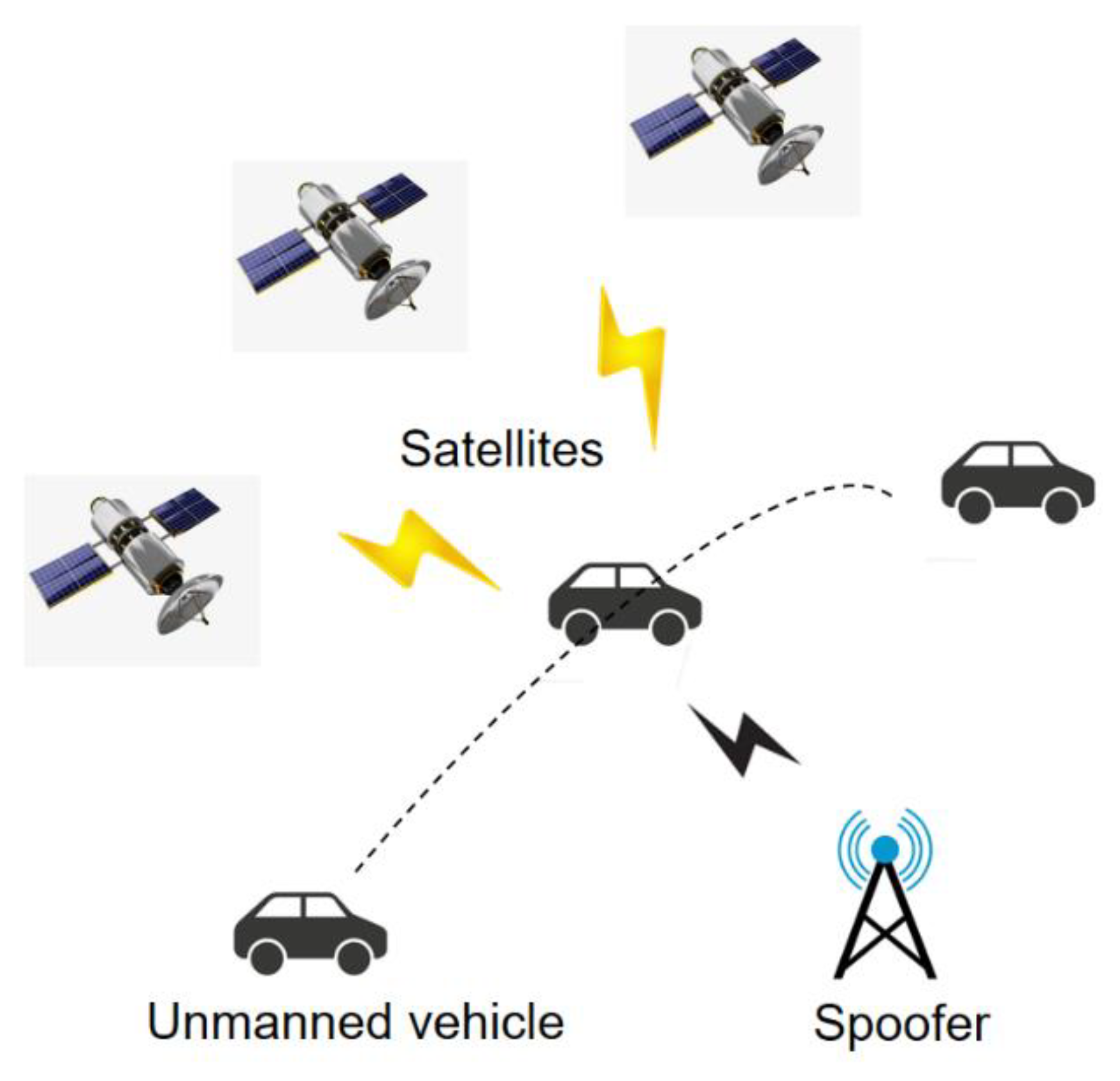
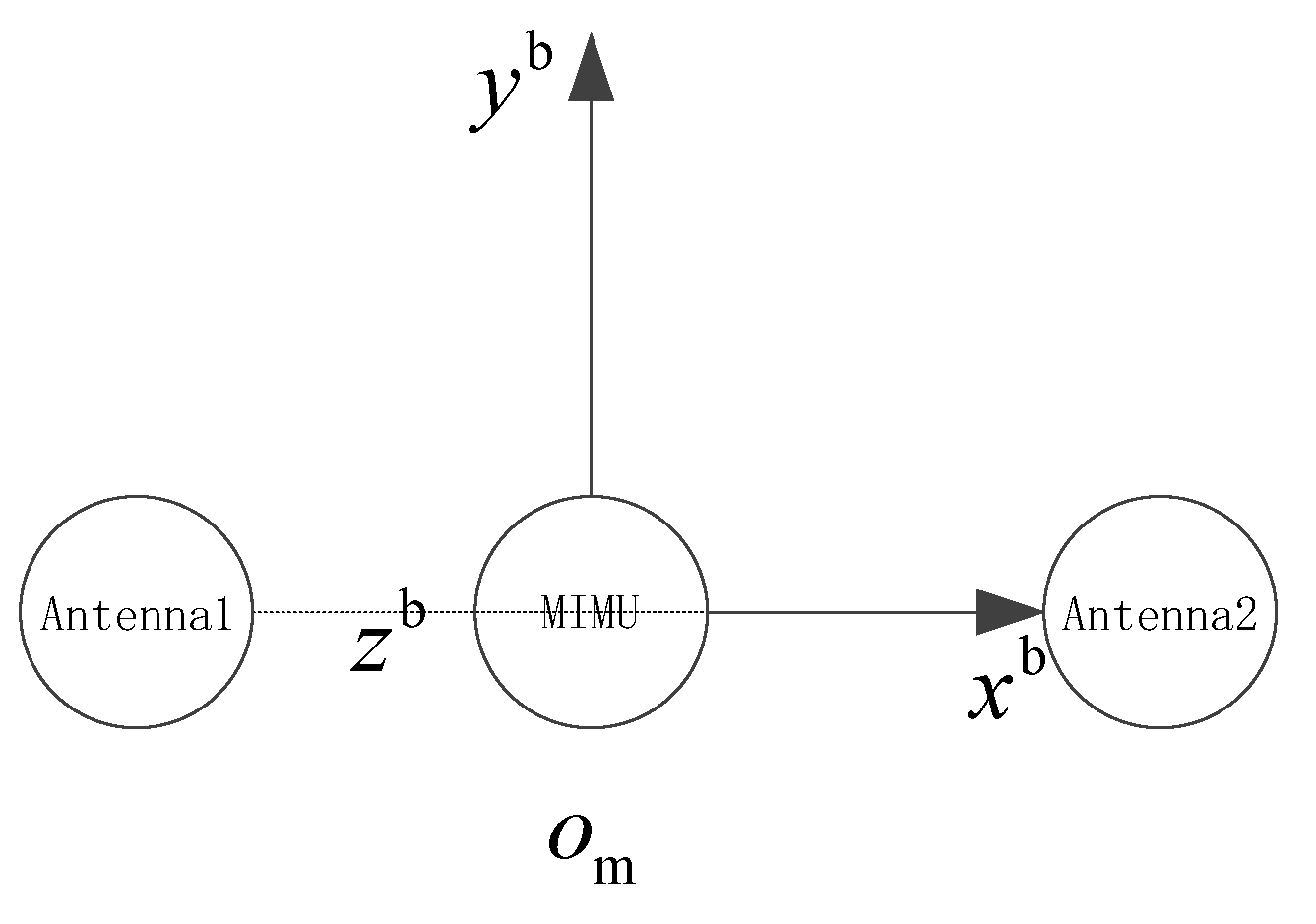
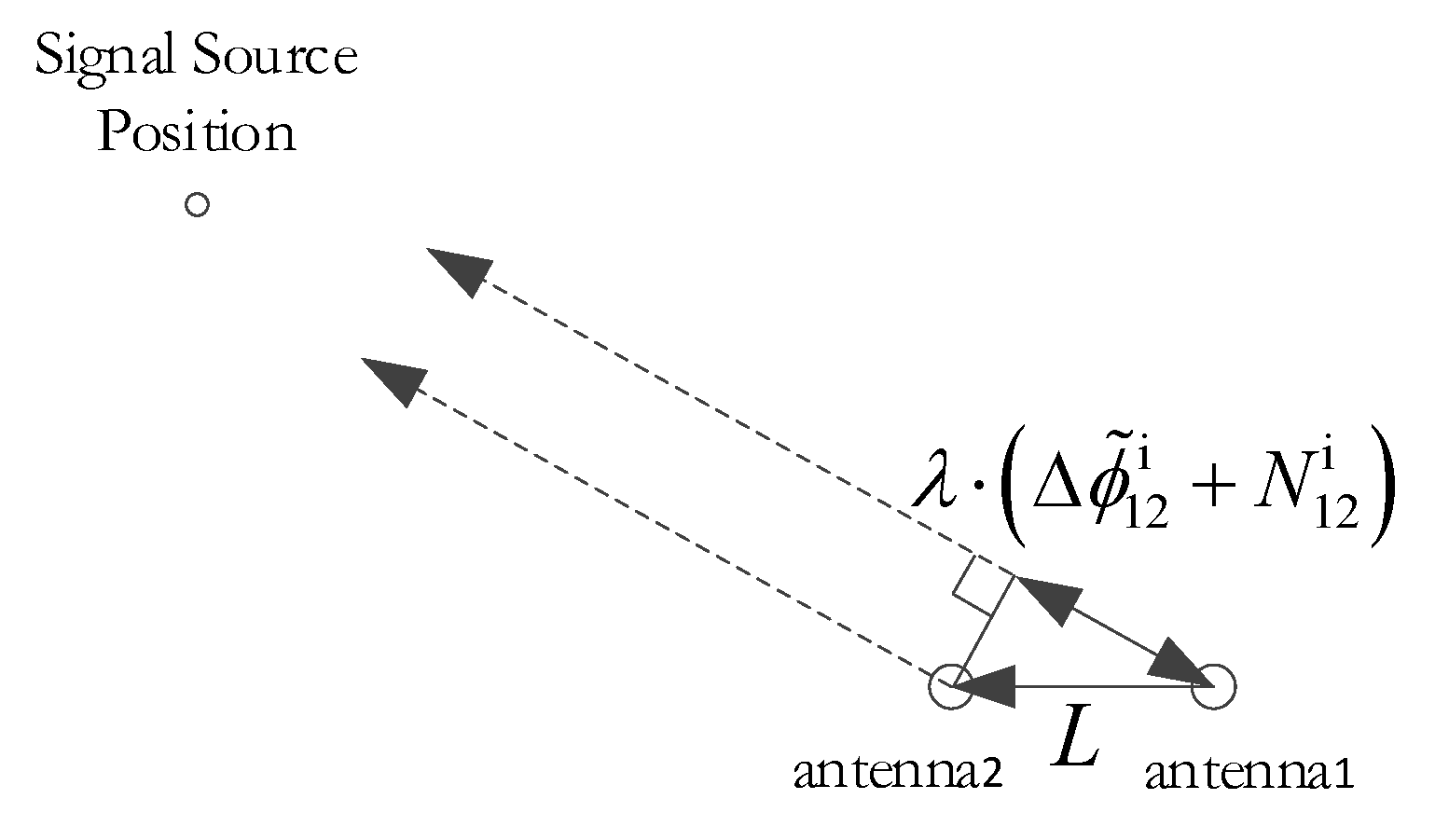
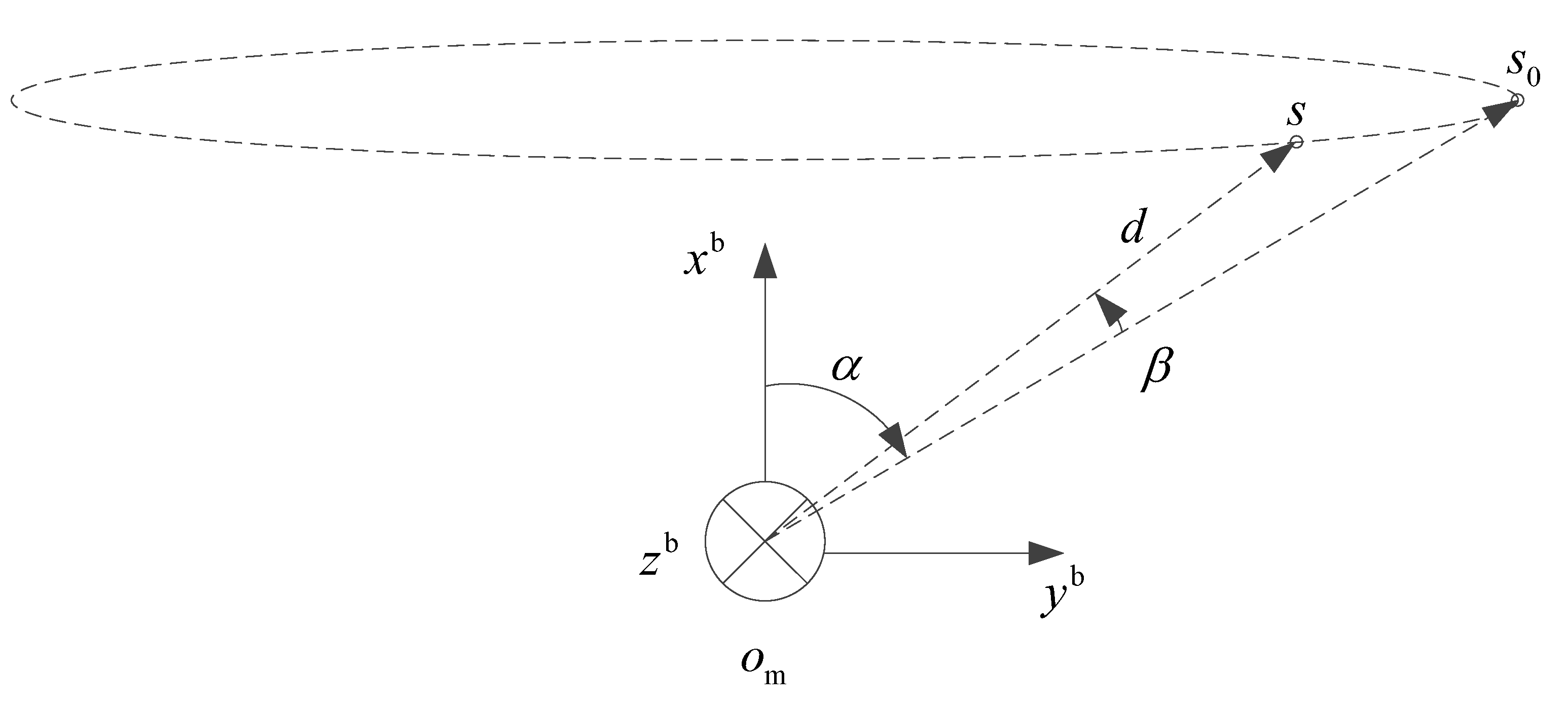
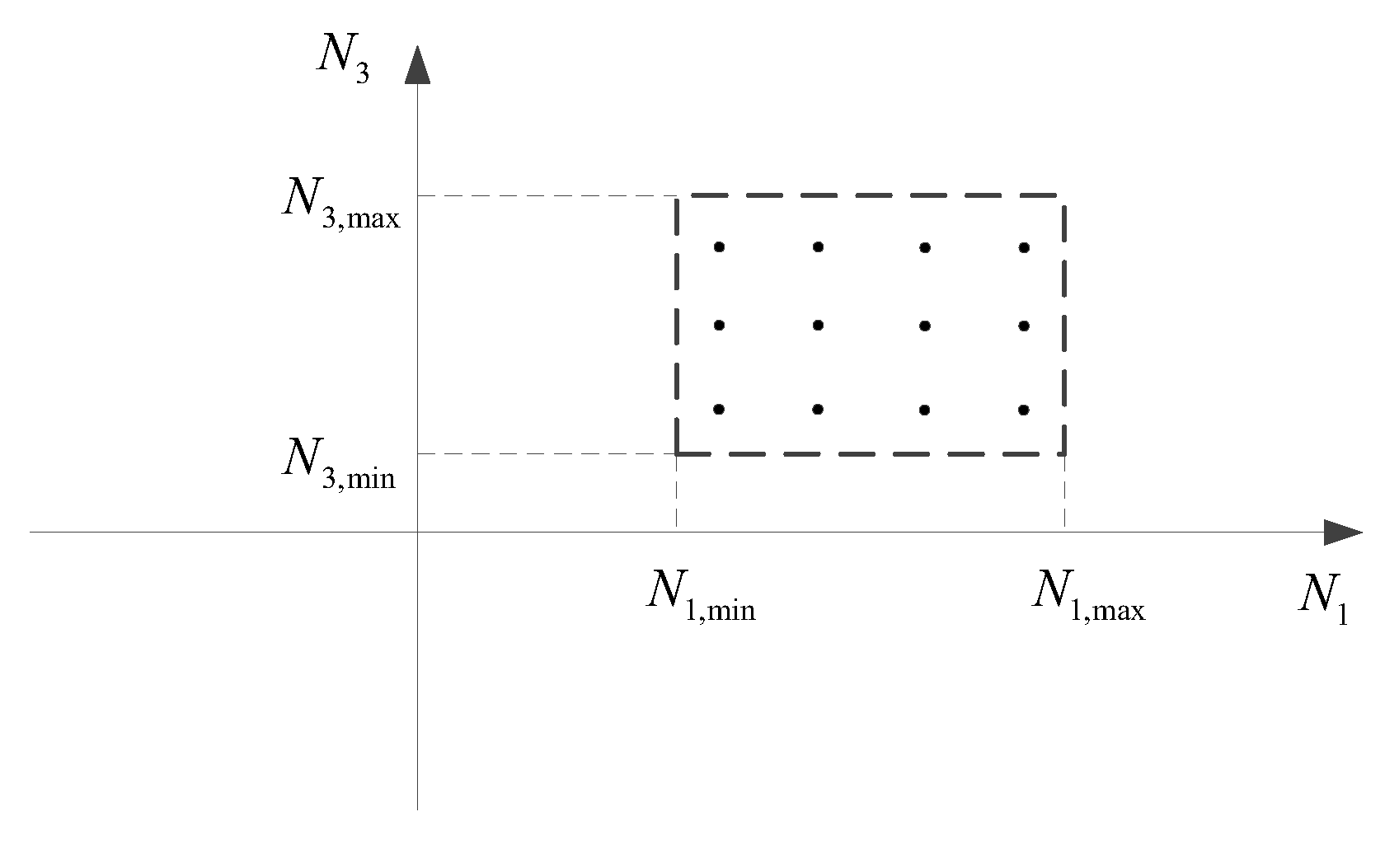
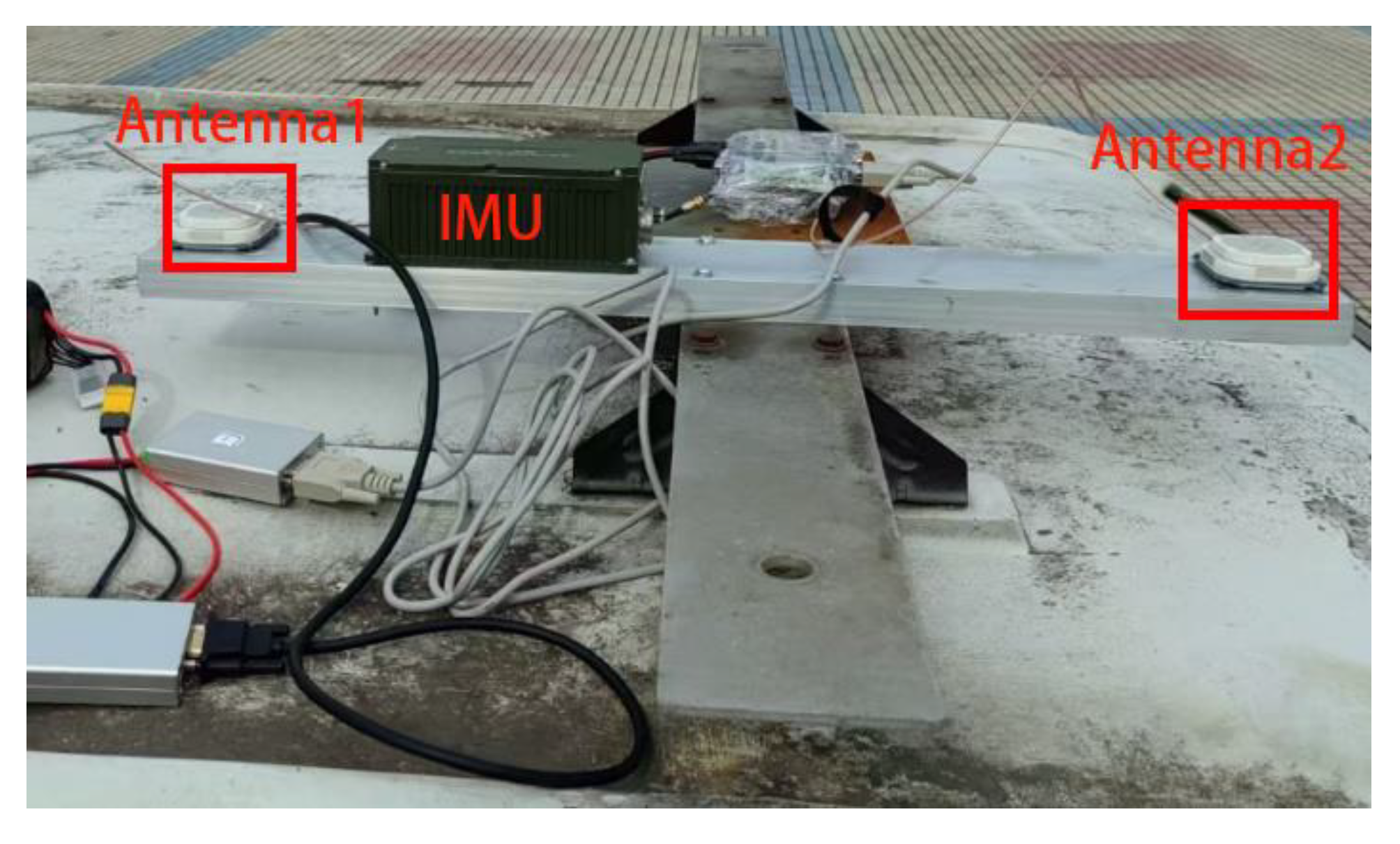
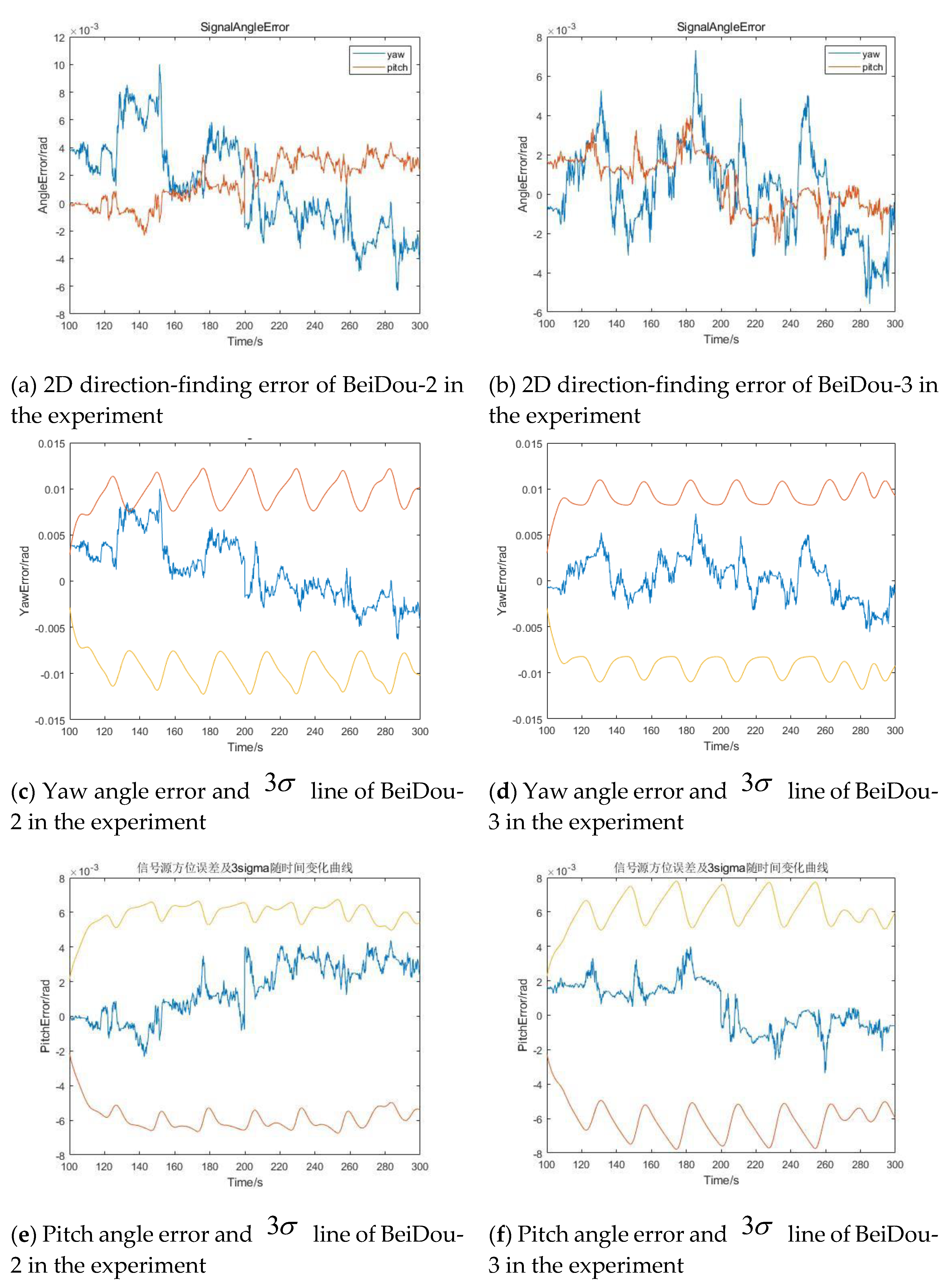
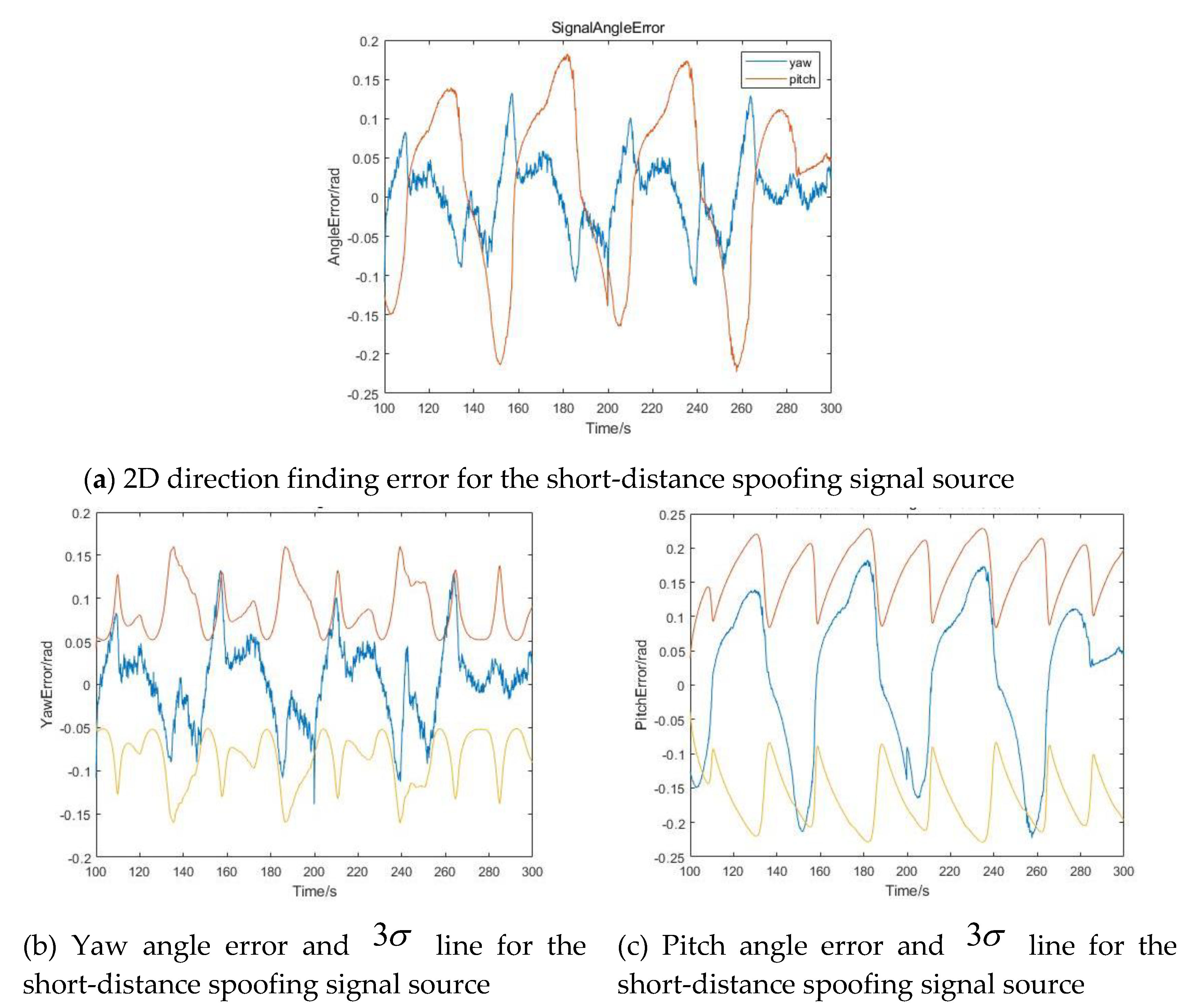
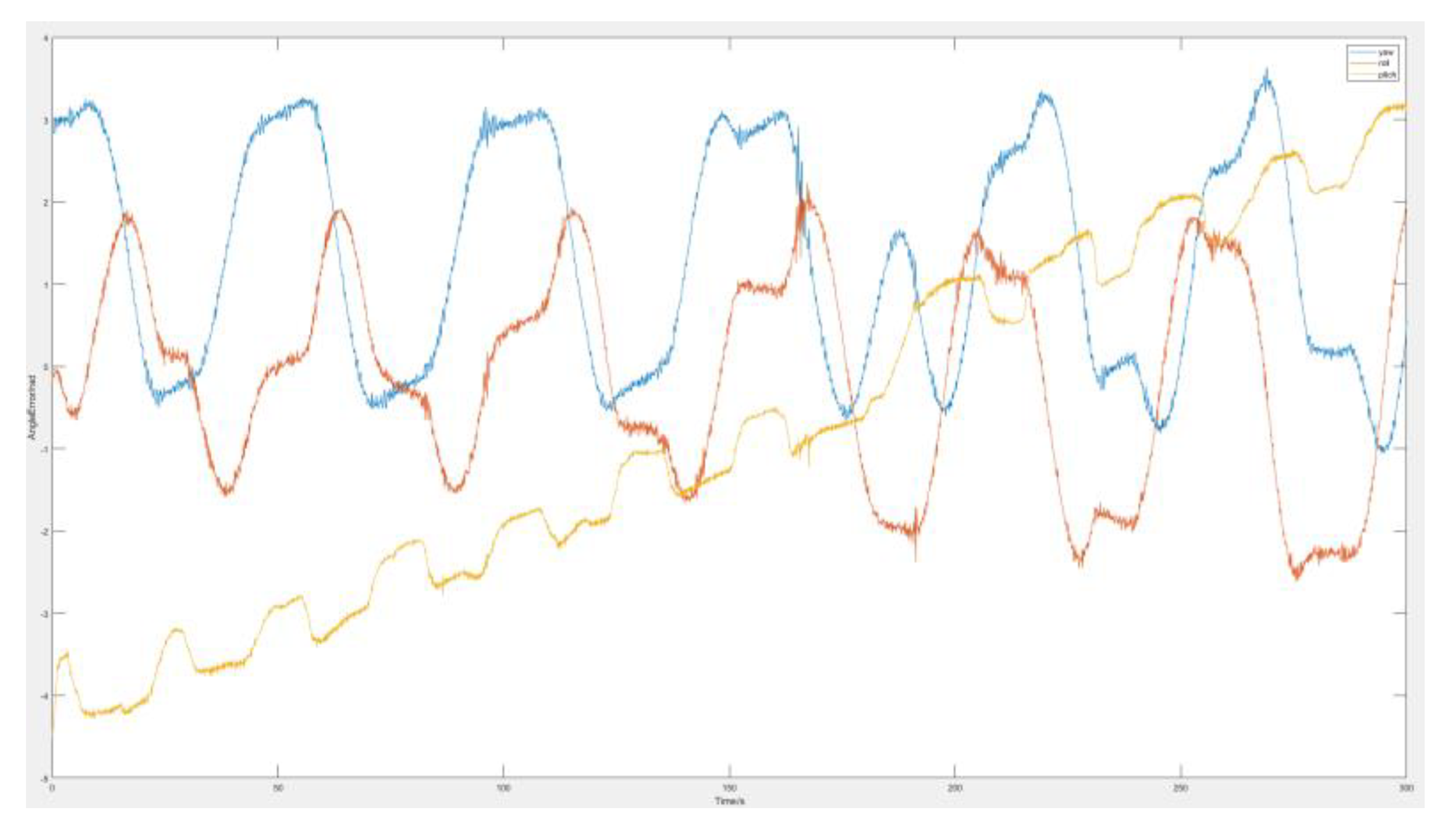
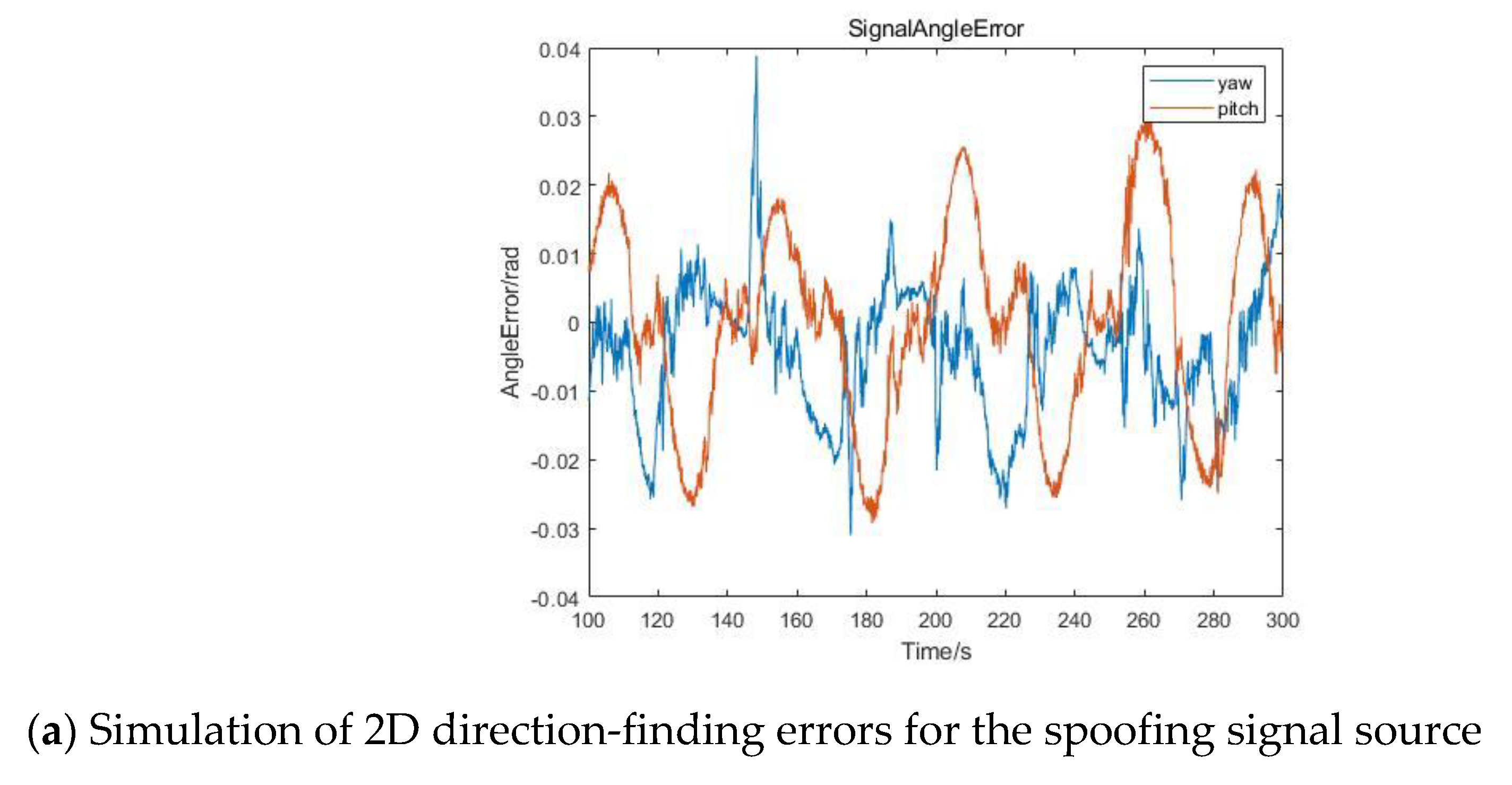
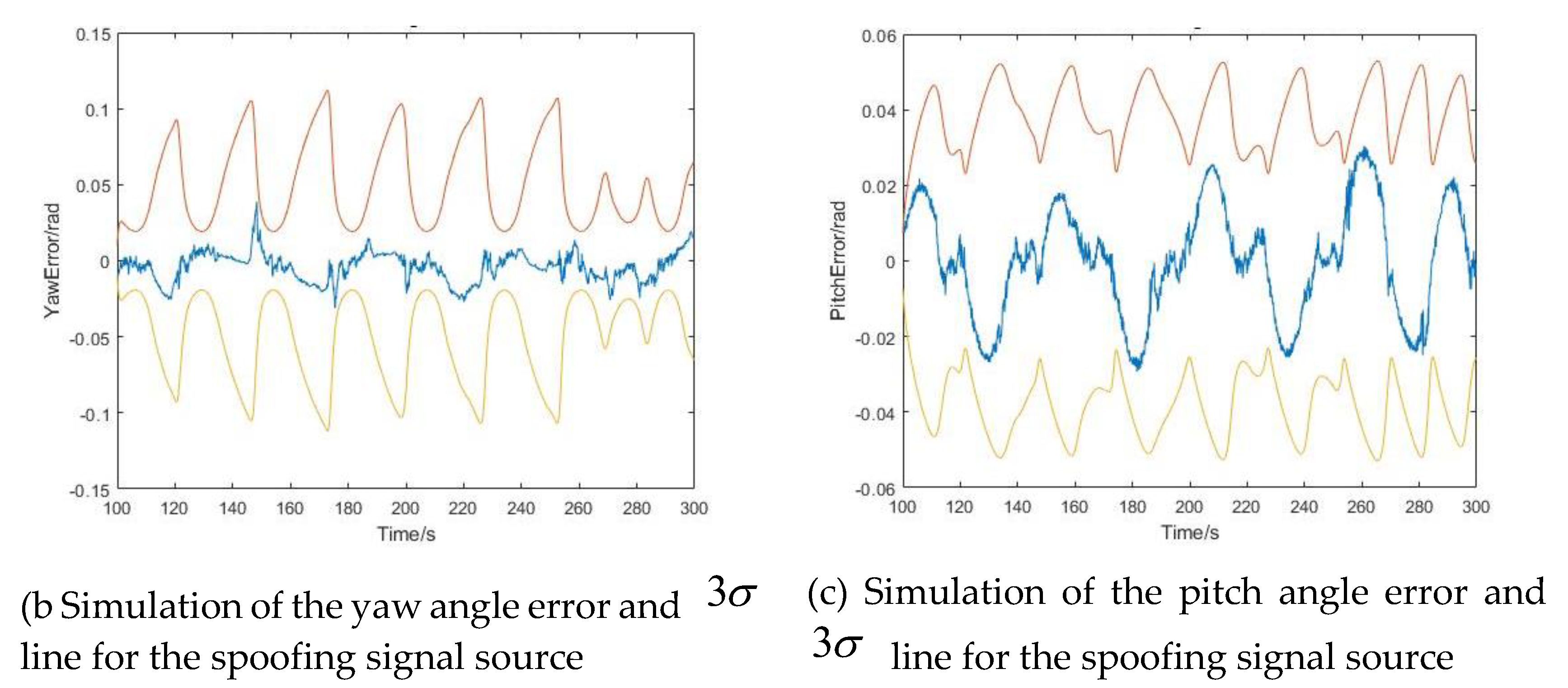
| Angles Error | 100m | 10km | 36000km |
|---|---|---|---|
| Yaw | |||
| Pitch |
Disclaimer/Publisher’s Note: The statements, opinions and data contained in all publications are solely those of the individual author(s) and contributor(s) and not of MDPI and/or the editor(s). MDPI and/or the editor(s) disclaim responsibility for any injury to people or property resulting from any ideas, methods, instructions or products referred to in the content. |
© 2024 by the authors. Licensee MDPI, Basel, Switzerland. This article is an open access article distributed under the terms and conditions of the Creative Commons Attribution (CC BY) license (http://creativecommons.org/licenses/by/4.0/).




